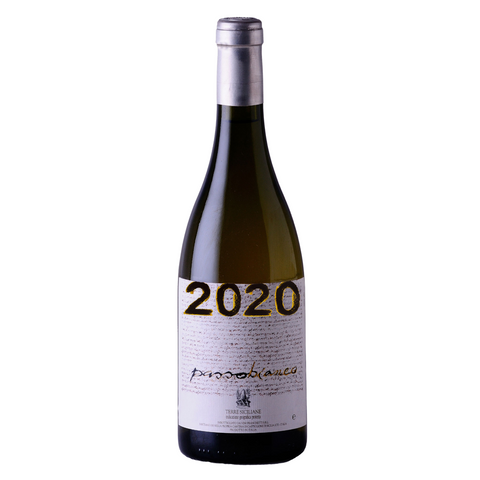
2022 Vini Franchetti Passopisciaro Terre Siciliane IGT "Passobianco," Sicily, Italy
The 2020 Passobianco is glossy and bright with generous tones of orchard fruit, almond marzipan and saffron. There are also distant mineral tones.
ABOUT THIS WINE
Instead of the indigenous Carricante, which grows on the eastern side of the volcano, Passobianco is made of 100% Chardonnay. When Franchetti arrived on Mt. Etna, he planted 4 hectares of the grape on steep terraces between 850 and 1,000 meters /2,600 and 3,300 feet above sea level in Contrada Guardiola, in very loose, deep, powder like lava that is rich in minerals. 2007 saw the first vintage of this wine, formerly known as Guardiola Bianco. Its complexities bring together the specific light, drastic changes in temperature, altitude, and volcanic influences of Etna, and the choice of Chardonnay was meant to allow these influences to meld and evolve over time as the white ages, inspired by the aging potential of the great whites of Burgundy. The harvest is quite fussy, as they pick little portions of the vineyard every day, tasting the berries trailing along the terraces day after day, harvesting only when each individual cluster is ripe. The resulting wine is rich yet fresh, bright yet layered.
ABOUT THIS PRODUCER
In 2000 Andrea Franchetti decided to restore an old farm and cellars on the slopes of Mount Etna, an active volcano in northeastern Sicily. The winery sits at about a thousand meters of altitude above the small wine town of Passopisciaro in the district of Castiglione di Sicilia, on the northern slope of the volcano. His first task was to clear and restore long-abandoned terraces of ancient vines on the northern slopes of the mountain, replanting at a density of 12,000 vines per hectare on thin lavic soil. His arrival on Etna helped to initiate the renaissance of viticulture on the mountain and an international discovery of the wines of Etna. At Passopisciaro, he focuses on the native grape Nerello Mascalese and its various expressions of terroir and altitudes through a series of crus, as well as the varieties Chardonnay, Petit Verdot, and Cesanese d’Affile.
The high altitude, sun-drenched vineyards are idyllic yet a constant plume of smoke and the odd ash-filled belch present a constant reminder that Etna is indeed a volcano with attitude, given to relatively frequent lava spills. These spills devastate the landscape, yet each flow leaves a unique mineral profile, giving rise to the notion of various terroirs, here called contrade. The borders of the contrade reflect old feudal property lines, which are still mapped out on the local land registry. Franchetti respects and plays to the strengths of his chosen terroir on Etna, producing wines of remarkable complexity and individual personality. Significant temperature differences between day and night also play an important role, necessitating a longer growing period and this, in turn, contributes complexity and intensity, as do the profound mineral elements of the volcanic soils.
Details:
| Grape(s) | Chardonnay |
| Farming | Organic |
